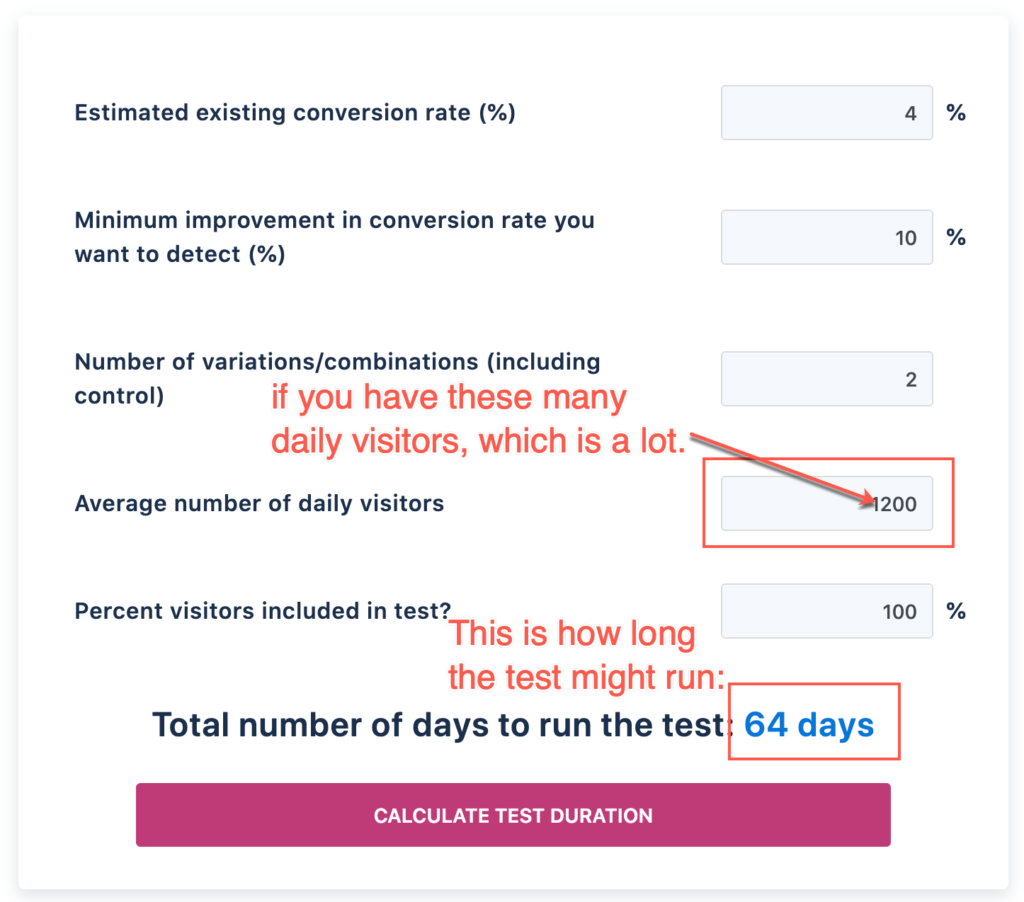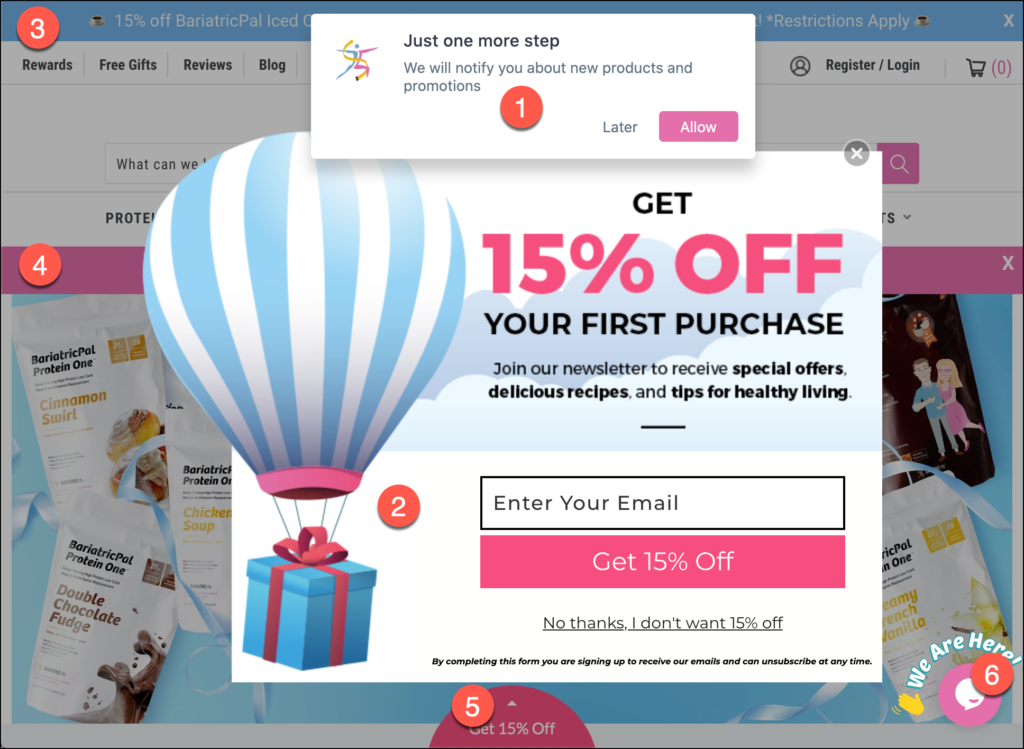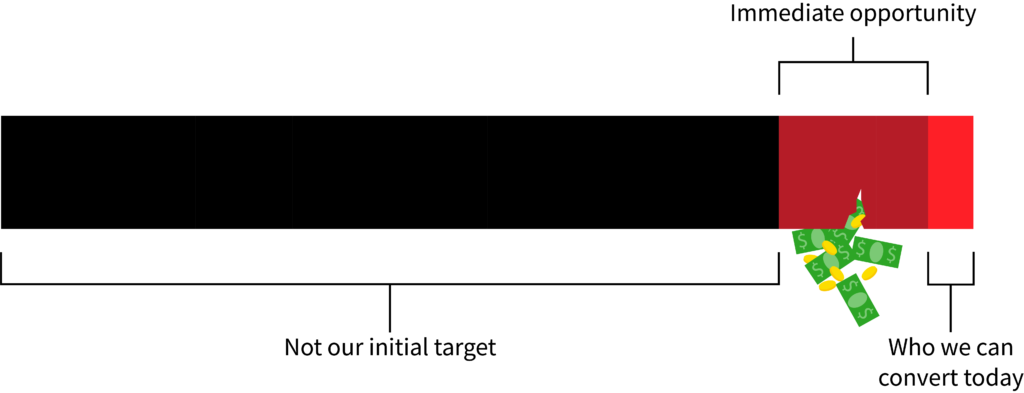Blog
Customer Journey Optimization
Customer Journey Optimization is the discipline of looking at marketing holistically.
The trouble with A/B testing
We love A/B testing. We’ve been doing it since 2009. A/B testing is the most scientific way to validate a marketing concept. But A/B testing can train one to become very narrow where you are looking at one page at a time. You can lose sight of the bigger picture. Can’t see the forest for the trees.
Also, A/B testing requires a crap ton of traffic:

Marketing used to be straight forward
Customer journeys used to be like a straight line.
But today, we’re living in a multi-touch, multi-device, multi-reminder environment.

Your story
There is just something about you. It’s the thing that’s brought you this far.
This thing is your “why we’re different” story.
But if you’re like most sites then less than 4% of your visitors see it, believe it, and dig it. The typical return rate for a site is around 20%
Globally, the average session duration for e-commerce is 2 minutes and 32 seconds (source).
What this means
This means that if you can’t convince and convert your visitor within 2 minutes and 32 seconds there is an 80% you’ve lost this visitor forever. Ouch.
And what do bad marketers do when presented this fact?

Customer Journey Optimization (CJO)
CJO forces us to think about the buying experience from the buyer’s perspective.
How big is the opportunity?
Of all the visitors, ~15% are our addressable market.
You are currently converting 4%. That still leaves 11%.

2 things need to happen to achieve Customer Journey Optimization
1: Stretch the session duration by:
A: removing friction
B: tweaking your story
C: adding a strategic plan
A: removing friction
Shoppers are notoriously bad at coming to us with their frustration. If they did, life would be so much easier. Even though we have a chat prompt and promptly show our contact details only the most motivated shoppers will use those channels.
Most who enter confusion and frustration will remain confused and frustrated.
B: making the story great process:
i: interview past buyers to understand why they bought.
ii: apply 9 point buyer psychology conversion copywriting checklist to your story.
C: adding a strategic plan
— Set site tracking to track project progress.
— Fix glitches, usability issues, and apply CRO best practices. Let’s just get the obvious friction out of the way.
— Catalog site assets that convert crazy well. Why? We need this handy as we start rapidly testing ideas.
— Ensure these highest converting elements are seen by most visitors. What’s the point of having great content if buyers don’t discover it?
— Make sure our top landing pages have super low bounce rates. Once the visitor bounces they have a 0% chance of converting.
— Shoppers are free to roam. Subtly nudge them to use our awareness, interest, desire, and action trail. Why? For the same reason why things can get lost in translation if a book reader jumps from chapter 1 to chapter 8 to chapter 2 to chapter 4.
— Product page optimization. No matter how you bring in people (through a Google PLA, remarketing ad, email blast) that traffic is ultimately going down to the product page. And that’s where the buyer makes the dreaded buy / no-buy decision.
— We are deadly scared of 2 things: when a buyer thinks “this sounds too good to be true” and when they have negative thoughts. So we want to do a perimeter check to ensure these have been accounted for.
— Add in conversation starters. These serve 2 purposes: 1 they help resolve negative thoughts and 2, help start conversations with hot prospects.
2: Continuing the conversation via email
Even if we remove all site friction we still run into limitations of user attention.
If users had incredibly high attention spans (they don’t) we would be able to convert most in the first session itself.
Don’t fight the buying cycle. When buyers reach the limit of their attention they’re basically telling us: “I’m likely to buy, just not today.”
At this point request permission to stay in touch.
Email conversations
Marketing automation is a seductive idea but if you’re trying to crack the buyer psychology nut we better be ready to get our hands dirty.
At this stage our goal isn’t efficiency, it’s efficacy.
With email conversations we have 2 objectives:
A: get to the bottom of why the 11% rejected us.
To unpack that question we need to start having conversations with 2 groups: prospects and new buyers.
B: to send out structured nurture campaigns.
The best thing about ecommerce is that sites have an open layout.
The worst thing about ecommerce is that sites have open layouts.
This is where structured nurture campaigns come in super handy. We can now send interested and qualified prospects, who’ve hit the attention limit, our product story in a distraction-free format.
Email 1: why we exist.
Focus of email 2: why our product must exist.
Finally, email 3: dealing with resistance.
We go really in-depth about nurture sequences in this article.
So that is our broad overview on customer journey optimization. There is a lot more to unpack. You can should leave a comment if you want to learn more about this topic. When I see comments, I’ll create more in-depth articles about the subject.
A little about us
Thank you for reading this article about the paradox of choice. We are Frictionless Commerce and over the last 11 years, we’ve thought about just one thing: how do we get online shoppers to convert? We’re fascinated by buyer psychology. And once we understand how your site visitor thinks we use our 9 point copywriting process to convince and convert them.
If you’re on LinkedIn much you can should definitely connect with me. On LinkedIn, I post ecommerce conversion ideas every day, multiple times a day.
Other buyer psychology-based eCommerce conversion ideas
If you liked this article you’ll love our other ideas:
“Is My Marketing Working?” A Unique Product Page Design Idea
Product Reviews & Buyer Psychology



